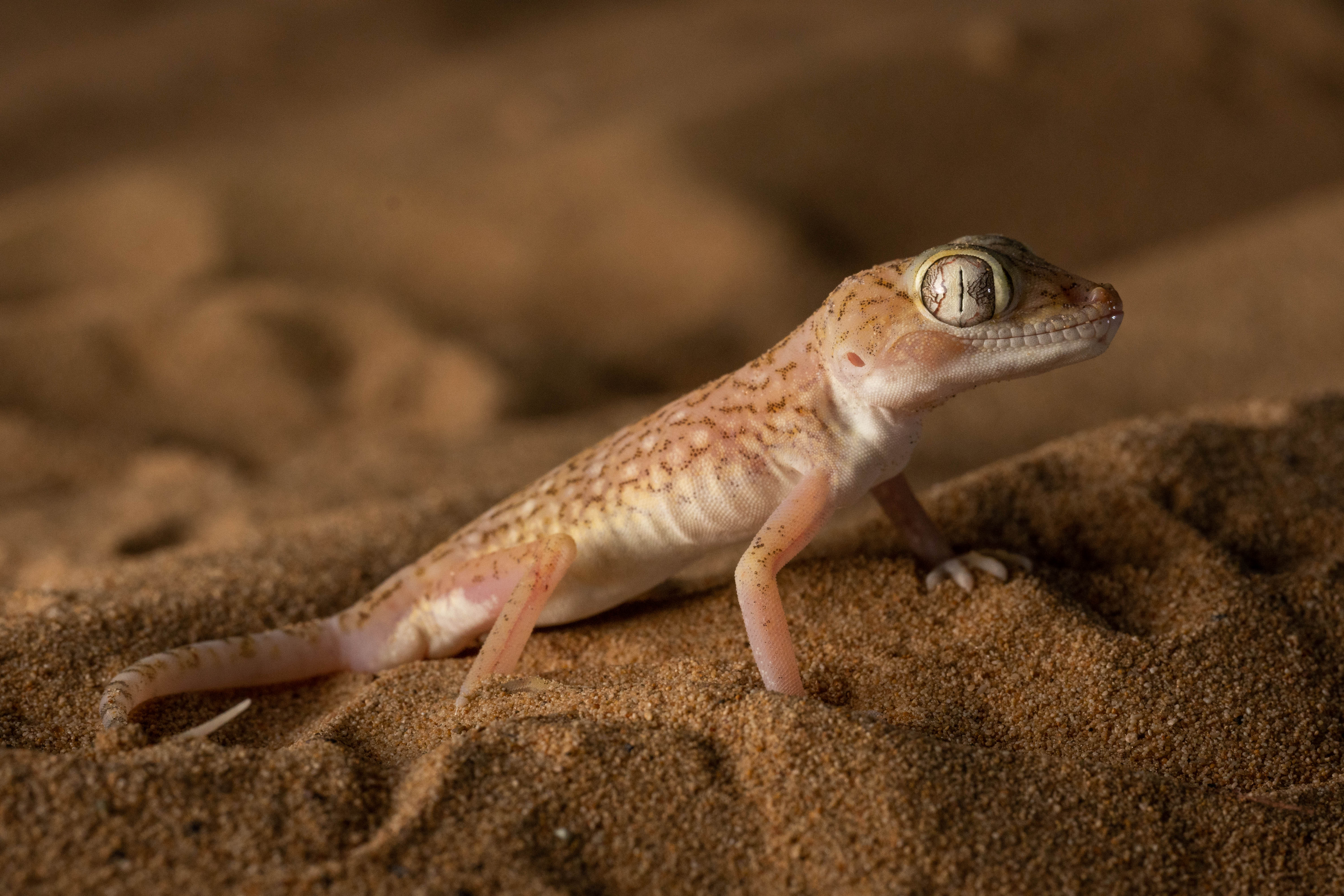Arabian desert geckos illuminate the night with striking fluorescence
Science is full of SHEroes whose passion, work and creativity inspired Evolutionary Biologists of today.
As part of our commitment with society, the Institute of Evolutionary Biology (IBE, CSIC-UPF) wants to give credit and visibility to the achievements of female scientists in evolution.
To that aim, we launched the campaign #WhoisyourSHEro to share stories of women who had an impact in our researchers' scientific career through our social media and website.
The campaign keeps on moving as more and more women in evolution are inspiring the IBE community.
You can join the conversation through social media under the hashtag #WhoisyourSHEro.
With the collaboration of the Spanish Foundation for Science and Technology - Ministry of Science and Innovation.
 |
Arabian desert geckos illuminate the night with striking fluorescence
An international team led by IBE researchers has discovered that several Arabian desert geckos show unexpected and vivid skin fluorescence.
These nocturnal creatures’ fluorescence likely aids in mating and social interactions among individuals in the vast desert, which may be crucial for their survival.
The groundbreaking discovery highlights the ecological uniqueness and importance of Arabian desert biodiversity.

An international team led by the Institute of Evolutionary Biology (IBE), a joint center of the Spanish National Research Council (CSIC) and Pompeu Fabra University (UPF), has uncovered a remarkable natural phenomenon: several species of desert-dwelling geckos exhibit striking biofluorescence, glowing vividly under ultraviolet light. This discovery, published in the Journal of Arid Environments, not only sheds light on unique adaptations within harsh environments, but also paves the way for further studies into the ecological interactions and evolutionary traits of these nocturnal sand dwellers.
During extensive field studies in regions such as Sharjah, Al Ula, and Nizwa in the Arabian Peninsula, researchers documented this glowing behavior in three gecko species: the Dune Sand Gecko (Stenodactylus doriae), the Eastern Sand Gecko (Stenodactylus leptocosymbotes), and the Arabian Web-footed Sand Gecko (Trigonodactylus arabicus). The ability to fluoresce, which is visible under UV light, could be naturally visible to the geckos, who are equipped with a vision that captures a broader spectrum of light than humans.

Scientists have shed light on the biofluorescence of the Arabian desert geckos. Credit to Bernat Burriel.
Bernat Burriel, the first author of the study, previously a predoctoral researcher at the IBE and currently a researcher at the Museu de Ciències Naturals de Barcelona (MCNB), explains the significance of the findings: "These geckos not only survive but thrive in one of the most challenging environments on earth, and their ability to glow could play a critical role in their survival strategies. It's fascinating how these small creatures show such a striking trait to enhance their communication and perhaps even their mating success."
This biofluorescence is particularly notable because it appears to have evolved independently in these geckos compared to other known fluorescent species, suggesting a significant evolutionary advantage in their natural habitat. “Fluorescence has previously been observed in six gecko species, but only one of these, the nocturnal Web-footed Gecko in the Namib desert in Africa, fluoresces from its skin – the rest fluoresce from the bones. This type of mechanism may be very useful to communicate in the vast desert", adds Burriel.

Arabian desert gecko. Credit to Bernat Burriel.
The Arabian geckos' skin fluorescence is primarily found on their lower bodies, which may help hide it from predators that can see UV light. According to Salvador Carranza, senior author of the study and Principal Investigator of the Systematics, Biogeography and Evolution of Reptiles and Amphibians lab at the IBE , “the location of the fluorescence - underneath or on the sides, rather than on the back - is likely a strategic choice to minimize visibility to predators while still allowing communication among geckos. When threatened, geckos press against the ground to conceal these fluorescent areas, suggesting they are aware of the increased visibility to predators”, adds Carranza.
This surprising discovery further emphasizes the importance of conservation actions to protect the distinctive desert biodiversity. "Understanding these unique biological traits helps us appreciate the complexity of desert ecosystems and the resilience of the species that inhabit them. It also underlines the need for ongoing conservation efforts to protect these unique creatures and their natural habitats from environmental threats", concludes Carranza.
Referenced article:
Burriel-Carranza, B., Talavera, A., Mochales-Riaño, G., Al Hashmi, S., Al Busaidi, A., Els, J., & Carranza, S. (2024). First record of dermal fluorescence in the desert-adapted Stenodactylus and Trigonodactylus geckos. Journal of Arid Environments. DOI:10.1016/j.jaridenv.2024.105161
